How to Get to Peru and Travel Within the Country
Peru boasts diverse landscapes, including the Andes mountains, Amazon rainforest, and Pacific coastline. Visitors can explore historical sites like Machu Picchu, vibrant cities, and rich natural beauty with careful travel planning.
- Local Expertise
- Custom Itineraries
- Best Deals
- 24/7 Support

Explore Vacation Options
Getting To Peru
Most international travelers arrive in Peru by air, with the primary entry point being Jorge Chávez International Airport (LIM) in Lima. While overland routes are available from neighboring countries, air travel remains the most practical and widely used option.
Arriving by Air
Peru is well connected to North America, Europe, and other regions through several major airlines:
Direct Flight Options To Lima
From North America
Toronto
Houston
Florida
New York
Atlanta
Los Angeles
From Europe
Amsterdam
Madrid
Florida
Flight Duration & Cost
Flight Duration (Approximate)
- North America to Lima : 6-8.5 hours
- Western Europe to Lima : 12 hours
Flight Costs
North America to Lima :
$300-$400 USD
(Economy, flexible dates, early booking)
Europe to Lima :
€600-€700
Transport Options
Getting Around in Peru
Peru’s diverse landscape, ranging from bustling cities to remote jungle regions and high-altitude mountains, requires careful transportation planning. Choosing the right mode of travel ensures efficiency, comfort, and safety throughout your journey.
Whether you’re exploring historic cities, traveling between major tourist destinations, or venturing into the Amazon, Peru offers various transportation options to fit different budgets and travel styles. Below, we break down the most common methods for getting around within cities and between regions.
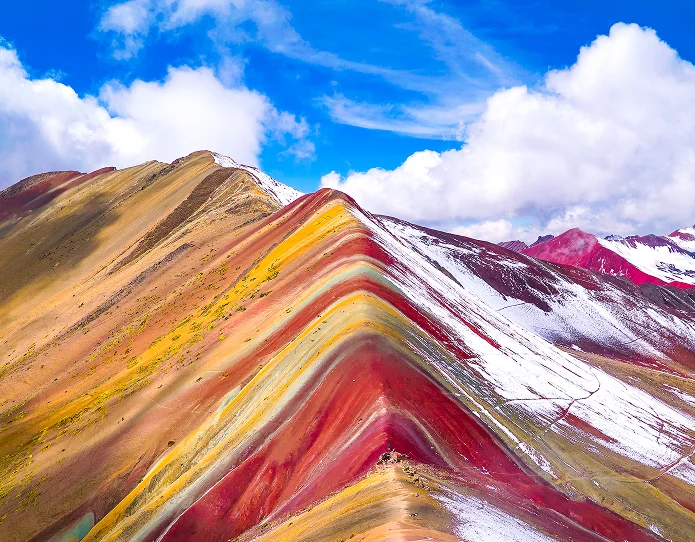
Transportation Within Cities

Taxis & Ride Share Services
- Registered Taxis
Choose official taxis with government issued license plates. - Unregistered Taxis
Avoid random street taxis, especially at night. - Ride Share Apps
Use Uber and Cabify for safer, predictable fares.

Moto Taxis
Moto taxis (similar to tuk-tuks in Asia) are widely used in smaller cities and rural areas.
Public Buses & Combi Vans
- Luxury Amazon River Cruises
Available in Lima and a few other cities. - Combis & Micros
Small minivans and minibuses used by locals for commuting.
Bus drivers drive aggressively; consider using taxis or ride-shares for convenience.
Regional Travel
Traveling Between Regions
Peru is a large country with diverse terrains, making intercity travel a key part of trip planning. Depending on your budget, schedule, and comfort level, you can choose from buses, domestic flights, trains, or even boats in certain regions.
Long Distance Buses
Peru is a large country with diverse terrains, making intercity travel a key part of trip planning. Depending on your budget, schedule, and comfort level, you can choose from buses, domestic flights, trains, or even boats in certain regions.
Recommended Bus Companies:
- Cruz del Sur
Comfortable, reputable, and reliable. - Oltursa & Civa
Mid-range options with comfortable seating
- Peru Hop
Perfect for tourists with flexible hop-on/hop-off service.
Types of Buses:
- Basic Buses:
Cheap but offer minimal comfort and safety.
- Luxury Buses
Equipped with reclining seats, entertainment screens & meals
Overnight buses are a great way to save on accommodation costs while covering long distances efficiently. However, for routes with winding mountain roads.
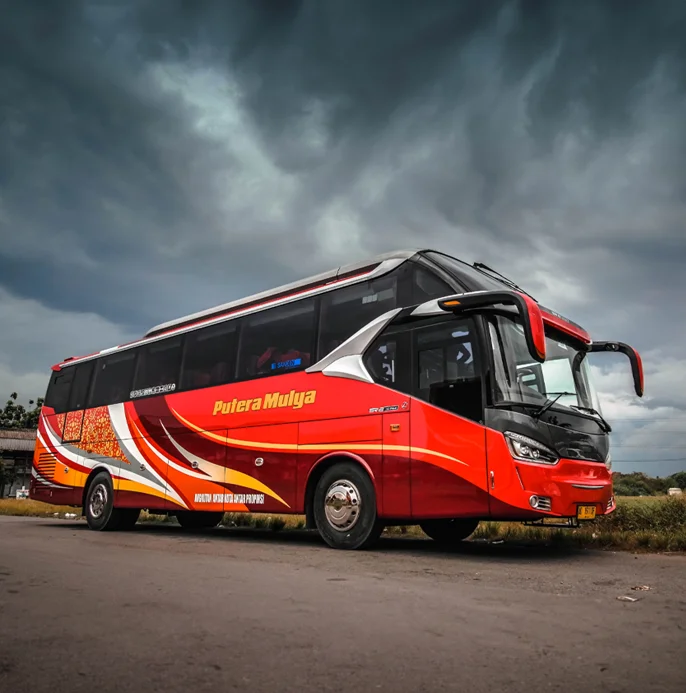
Domestic Flights
For travelers short on time, flying is the fastest and most convenient way to move between major destinations. Domestic flights cut travel time significantly compared to long bus rides.
Major Domestic Airports:
- Lima (LIM)
Main international and domestic hub. - Arequipa (AQP)
Access to Colca Canyon and southern Peru. - Iquitos (IQT)
The largest city in the Amazon.
- Cusco (CUZ)
Gateway to Machu Picchu. - Trujillo (TRU)
Northern Peru’s cultural and historical center.
Pros & Cons of Flying in Peru:
- Fast and convenient:
Lima to Cusco flight: 1 hour. - Safe and reliable
Major airlines include LATAM, Sky Airline, and Viva Air.
- Fast and convenient:
Lima to Cusco flight: 1 hour. - Many routes require
Many routes require a layover in Lima, making flights between smaller cities less direct.
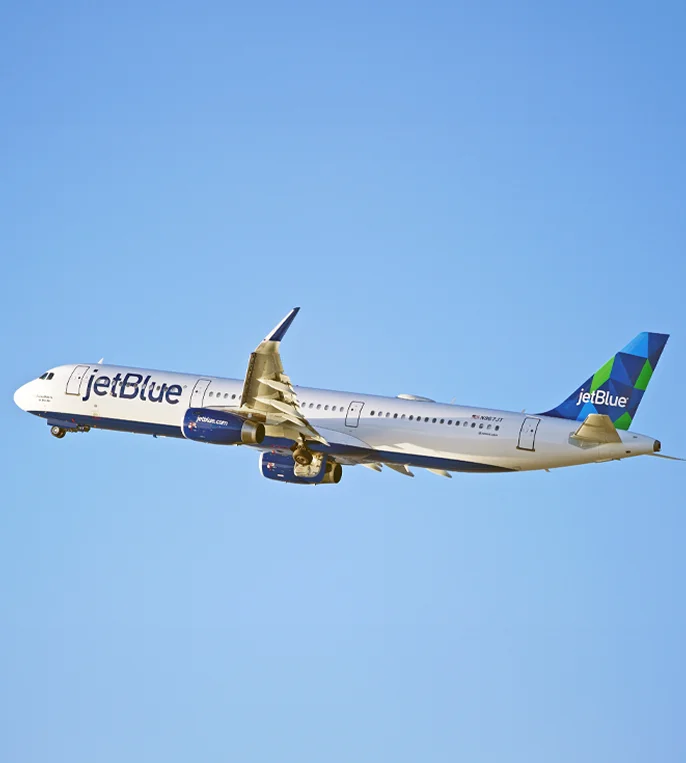
Trains
Although Peru’s train network is limited, it provides some of the most scenic and iconic rail journeys in South America.
Popular Train Routes:
- Cusco – Ollantaytambo – Aguas Calientes (Machu Picchu) The most famous route, operated by PeruRail and Inca Rail.
- Lima – Huancayo
A breathtaking mountain railway with high-altitude views. - Arequipa – Puno – Cusco
A luxury train journey through the Andean highlands.
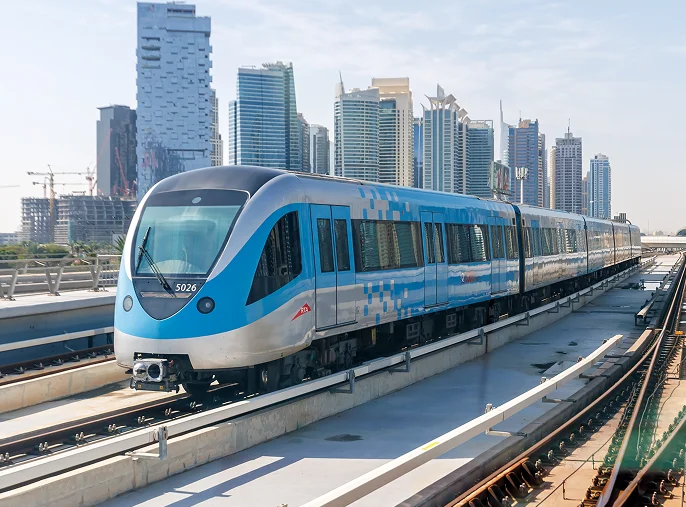
Boats (Amazon Region)
For those visiting the Amazon Basin, boat travel is often the only way to reach remote destinations.
- Iquitos (IQT):
Accessible only by boat or plane. Riverboats travel between Iquitos and other Amazonian towns. - Puerto Maldonado:
A gateway to jungle lodges and Amazon expeditions, often reached via boat from the city. - Lake Titicaca:
Boats transport visitors to the floating Uros Islands and other indigenous communities.
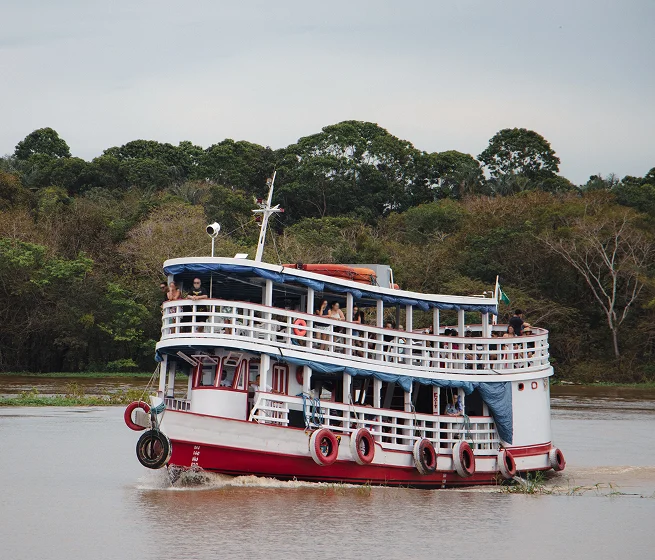
Car Rentals
Renting a car offers flexibility and off-the-beaten-path exploration but is not recommended for first-time visitors due to challenging road conditions and unfamiliar driving habits.
Key Considerations:
- Traffic:
Cities like Lima and Cusco have chaotic traffic, making driving stressful - Road Conditions:
Some rural roads are unpaved, steep, and poorly maintained. A 4WD vehicle is necessary for mountain and jungle areas. - Safety:
Avoid night driving in remote areas due to limited lighting and potential hazards.

Every Trip With Us Creates A Positive Impact
Join us on a journey where every trip you take contributes to a positive change, supporting communities and preserving Peru’s wonders.
Peru Transportation
Exploring Peru Travel Options
Peru offers a variety of transportation options, each catering to different travel needs. Whether you prioritize speed, budget, or adventure, you can choose from affordable buses, convenient flights, scenic trains, or rental cars for flexibility.
For most travelers, a combination of flights, buses, and trains will provide the best balance of comfort, cost, and efficiency. By planning ahead and selecting the right transport method, you can explore Peru with ease and fully enjoy its incredible landscapes and cultural treasures
- Affordable Buses
- Scenic Trains
- Convenient Flights
- Flexible Rentals
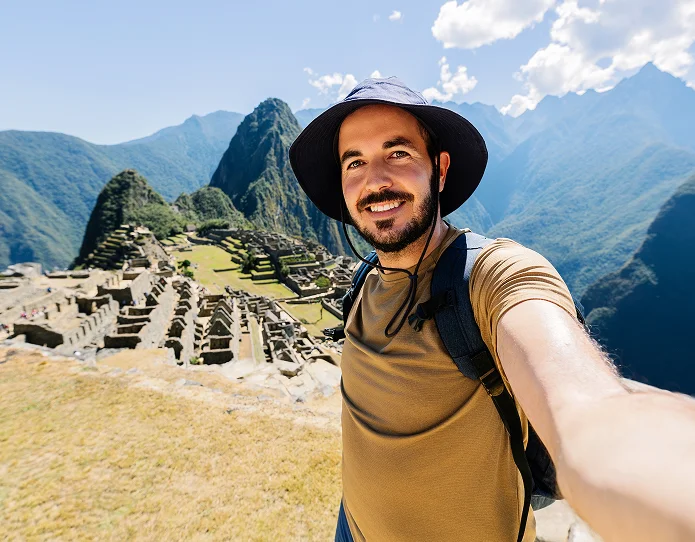
Peru Travel Tips
Travel Tips for a Smooth Journey in Peru
Navigating Peru efficiently requires planning and awareness. From language barriers to safety and transportation, here are some essential travel tips to help you make the most of your trip while ensuring a smooth and enjoyable experience.
Learn Basic Spanish Phrases
While English is spoken in tourist areas, Spanish is the primary language in Peru. Knowing a few key phrases can make interactions with locals easier, especially in rural areas or when using public transport.
- Hola, ¿cómo estás? (Hello, how are you?)
- ¿Cuánto cuesta? (How much does it cost?)
- ¿Dónde está…? (Where is…?)
- Quisiera un boleto para… (I would like a ticket to…)
- No entiendo, ¿puede repetirlo? (I don’t understand, can you repeat that?)
Learn Basic Spanish Phrases
While English is spoken in tourist areas, Spanish is the primary language in Peru. Knowing a few key phrases can make interactions with locals easier, especially in rural areas or when using public transport.
Here are some useful phrases:
- Exchange a small amount of US dollars or Euros to Peruvian Soles before arrival or at the airport.
- Avoid using unofficial money exchangers on the street; use banks, exchange offices (casas de cambio), or ATMs.
- Always carry small bills and coins for taxis, bus fares, and markets, as many vendors don't accept large denominations.
- Inform your bank of your travel dates to avoid card blocks on international transactions.
Book Transportation in Advance
Peru is a large country with varied terrain, and transport availability can fluctuate based on season and demand.
- Flights:
Book domestic flights early, especially for popular routes like Lima to Cusco (Machu Picchu gateway). Prices rise closer to the travel date. - Long-distance buses:
Buy tickets in advance, especially for premium bus services like Cruz del Sur and Peru Hop. Some routes sell out quickly. - Trains:
The Machu Picchu train (Cusco–Aguas Calientes) should be booked at least weeks or months in advance during peak season. - Taxis & Ride shares:
Use Uber or Cabify for reliability in cities. If using taxis, agree on the fare before the ride.
Be Mindful of Safety
Safety Tips:
- Use Registered Taxis :
Book domestic flights early, especially for popular routes like Lima to Cusco (Machu Picchu gateway). Prices rise closer to the travel date. - Keep an eye on your belongings :
Pickpocketing can occur in crowded areas, bus stations, and markets. Use a crossbody bag with zippers - Know emergency numbers :
The police emergency number in Peru is 105. - Stay aware at ATMs :
Only withdraw money from secure, well-lit locations and avoid late-night withdrawals.
Acclimate to the Altitude Gradually
- Spend a day or two acclimating in a lower-altitude city like Lima or Arequipa before heading to the Andes.
- Drink plenty of water and avoid alcohol on arrival.
- Try coca tea, a traditional remedy for altitude sickness.
- If needed, take altitude medication (consult your doctor beforehand).
Pack Smart for Different Climates
- Layered clothing :
Temperatures vary significantly between day and night. - Comfortable walking shoes :Necessary for uneven terrain, especially in Cusco and Machu Picchu.
- Rain jacket :
Essential for the Amazon region and rainy season (November to April). - Sunscreen & sunglasses :
High altitudes increase sun exposure risk. - Insect repellent :
Protects against mosquitoes, especially in the Amazon and coastal areas.
Try Local Food & Drink with Caution
- Stick to bottled or filtered water, Avoid tap water, including ice cubes.
- Try ceviche and street food from trusted vendors.
- Bring digestive medication in case of food-related issues.
Stay Connected & Use Navigation Apps
Getting around Peru is easier with offline maps and translation apps.
Useful apps:
- Google Maps :
Download maps for offline navigation. - Uber & Cabify :
Safer and more convenient than street taxis. - Google Translate :
Helpful for quick translations in Spanish. - Moovit :
Public transport navigation in Lima.
Be Aware of Peruvian Entry & Exit Requirements
- Tourist Visa :
Most travelers do not need a visa for stays up to 90 days (including visitors from the US, Canada, EU, UK, and Australia). - Passport Validity :
Your passport must be valid for at least six months beyond your arrival date. - COVID-19 & Health Requirements :
Check current entry requirements, as policies may change.
Travel Insurance is Highly Recommended
- Medical emergencies & hospitalization
- Trip cancellations or delays
- Lost baggage
- Adventure activities (if applicable)
Planning for a Smooth Trip
By planning ahead and keeping these tips in mind, you can navigate Peru with confidence and fully enjoy its rich culture, breathtaking landscapes, and vibrant cities. Whether you prioritize adventure, comfort, or budget travel, Peru offers a range of transportation options and experiences to suit your travel style.
For a stress-free experience, consider booking a guided tour with a local travel company to handle logistics and provide expert insights.
- Plan Ahead
- Local Tours
- Transportation Options
- Cultural Immersion
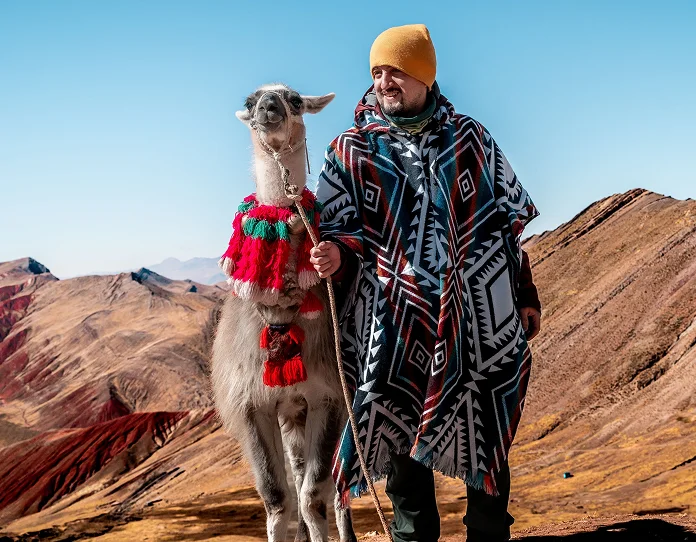
Contact Information
Find Our Contact Details for Quick Assistance and Personalized Travel Support.
Location
Lima, Peru
Get In Touch
* Tell Us About Your San Diego Remodeling Project

Frequently Asked Questions
Why should I use a Peru travel agent instead of booking on my own?
Booking through a trusted Peru travel agency guarantees:
- Expert knowledge of hidden gems & local experiences
- Exclusive deals on hotels, tours & transport
- 24/7 support before and during your trip
- A stress-free, organized itinerary
Do I need a visa to visit Peru?
Most travelers from the USA, Canada, UK, EU, and Australia do not need a visa for visits up to 90 days. Check with your local Peruvian consulate for details.
What is the best time to visit Peru?
- May – September : Best for trekking & outdoor activities (Dry season)
- October – April : Best for the Amazon & beaches (Rainy season)
What vaccinations do I need for Peru?
- Recommended : Hepatitis A, Typhoid, and Yellow Fever (for Amazon travel)
- Required : COVID-19 vaccine proof may be needed (check latest guidelines)
How do I get to Machu Picchu?
- By Train : From Cusco or Ollantaytambo with PeruRail or Inca Rail
- By Trek : Inca Trail, Salkantay Trek, or Lares Trek (permits required)
- By Bus : Via Hydroelectric Station + short hike
- A stress-free, organized itinerary
Do I need a permit for the Inca Trail?
Yes! The Inca Trail requires a permit, and spots sell out months in advance. Our Peru travel agents can secure your trek permit for you.
Can I visit Machu Picchu in one day?
Yes, you can take a day trip from Cusco, but an overnight stay in Aguas Calientes is recommended for a less rushed experience.
Is Peru safe for travelers?
Yes! Peru is generally safe, but common safety tips include:
- Use official taxis or rideshare apps (Uber, Cabify)
- Avoid flashing valuables in crowded areas
- Be cautious in markets, bus stations & downtown Lima
What is altitude sickness, and how do I prevent it?
Altitude sickness is common in Cusco, Machu Picchu, and Lake Titicaca (above 3,000m).
- Rest & drink lots of water
- Avoid alcohol & heavy meals upon arrival
- Try coca tea or altitude sickness pills
Can I drink tap water in Peru?
No, it’s best to drink bottled or filtered water to avoid stomach issues.
- 12345, Victor Tower, Lima, Peru
- [email protected]
- 1(800) 996-1139